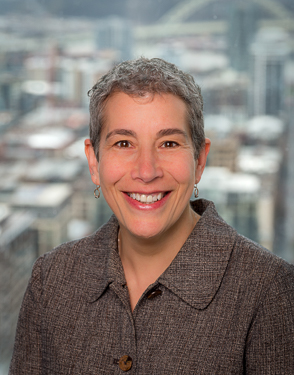Permutter said when it comes to the common thread seen most in accident/fatality investigations, it comes down to human error.
“In almost all of the cases, in most of them, there was some kind of operator error,” Perlmutter said. “Not just operating machinery, but someone cutting a corner, or coming up with a bad idea. The other way that things happen is that conditions deteriorate at mines.”

She has also worked on whistleblower investigations, and believes the industry will see more of these.
In terms of getting cited for safety issues, Perlmutter said underground coal mines in the US are considered to be the bad actor. A lot of the most frequently cited violations come from underground coal mines, with ground control and “accumulations” being the potential for mine explosions.
Everything other than coal mining is classified metal/non metal — and Perlmutter said where Mine Safety and Health Administration (MSHA) — the agency of the United States Department of Labor which administers the provisions of the Federal Mine Safety and Health Act, sees the most aggressive enforcement are guarding violations, particularly with conveyor belt rollers.
Perlmutter said she has seen many citations for electrical violations — for frayed extension cords, for example, and for housekeeping — where there are clear slip drip or flip dangers.
Perlmutter believes some citations tend to be overwritten in terms of the gravity that is assigned to them.
“If an inspector writes a citation for a pile of dust — he tends to have unmanaged expectations for when housekeeping issues should be addressed,” she said.
When the covid-19 pandemic hit, Perlmutter saw the industry adapt and enact measures such as planning shifts with less exposure to other miners, social distancing at the site, much more available PPE for personnel and effective quarantine systems in place and vigilance about who to let on site and under what circumstances.
But what Perlmutter noted she hasn’t seen is regulator bodies MSHA, or the Occupational Safety and Health Administration (OSHA) include in its covid-19 guidance, released last year, any emergency temporary standard.
“There isn’t a standard — MSHA has not issued a new standard,” she said. “When Biden took office, he said that MSHA and OSHA should consider whether to issue emergency temporary standards in response to the virus, and they have not. OSHA had a March 15 deadline — MSHA has been given more latitude and was asked to consider it with no deadline, but we don’t know what they are going to do.”
Neither the Trump nor Biden administrations regulated new safety standards. What MSHA did do was post non legally binding covid-19 guidance online.
“This guidance is intended for miners and operators in coal, metal, or nonmetal mines to help them identify risks of being exposed to SARS-CoV-2, the virus that causes COVID-19, at work and to help them determine appropriate control measures to reduce such risk. This guidance contains recommendations, as well as descriptions of mandatory safety and health standards. It is not a standard or regulation, and it creates no new legal obligations,” MSHA’s website reads.
The latest safety initiative it posted online was September 2018.
In terms of who was the onus on, at those organizations, to issue new safety standards, Perlmutter said the blame for not regulating falls in a few places.
“I think part of it is that we were looking at two different presidential administrations,”she said. “Part of what happened was there were political agendas at play. The decision to issue or not issue a standard and the timing of any such standard has been largely driven by political considerations.”
Some of the world’s biggest mines reported covid outbreaks over the past year, including Freeport McMoRan’s Grasberg, Gemfields’ Montepuez, the Brucejack, De Beers‘ Gahcho Kué, Boliden’s Aitik, Hinatuan, Trevali’s Caribou and Satander, Iamgold’s Rosebel, and Alrosa’s International Underground mine.
Perlmutter remembers a mine inspection in Alaska going awry when the inspector, who had travelled abroad before arriving at the mine, exposed workers to covid-19.
“Don’t let your next mine inspection turn into a super spreader event,” is Perlmutter’s advice.




